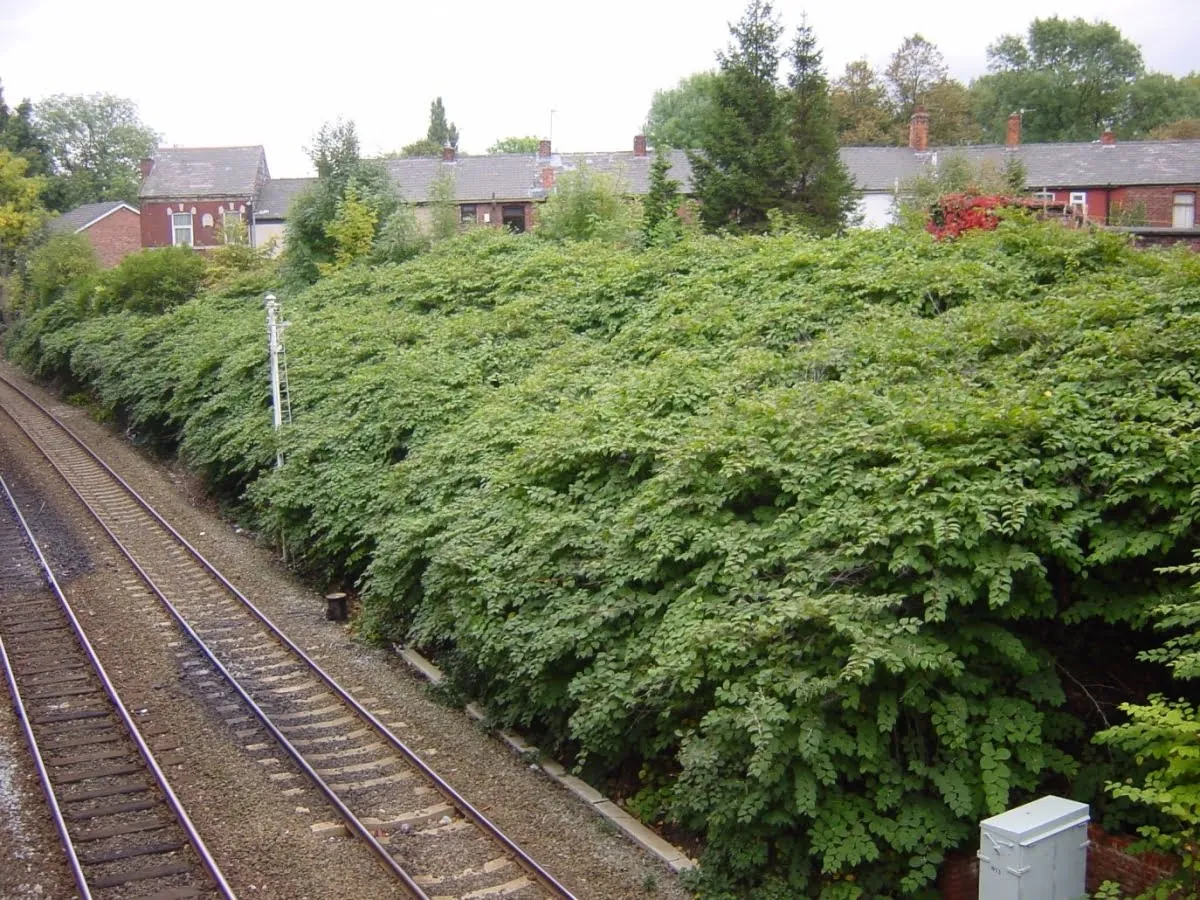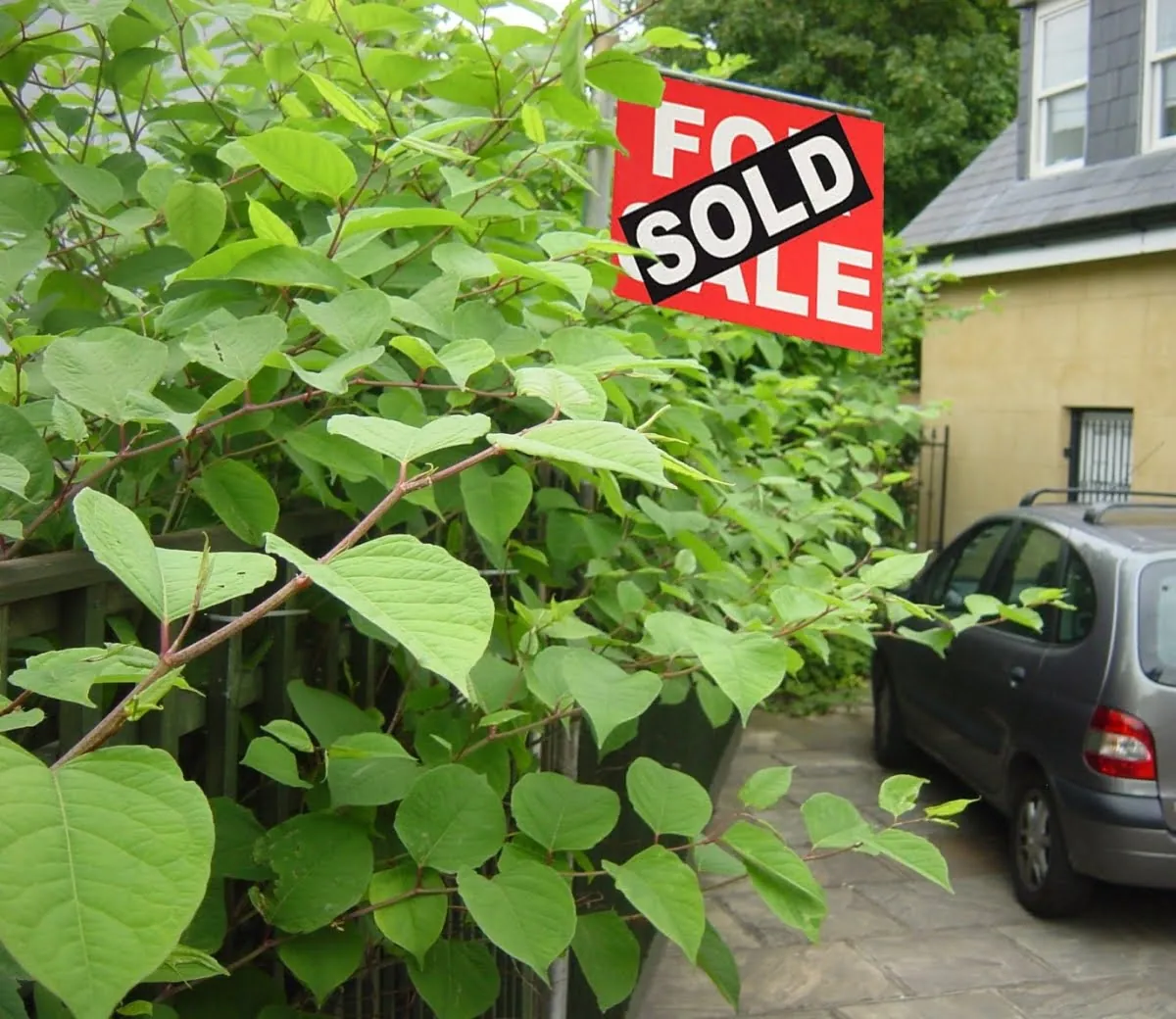On the 3rd July 2018 the Court of Appeal handed down a land mark Judgment in the case of Network Rail Infrastructure v Williams & Waistell.  This is a case in which two neighbouring property owners brought a claim against Network Rail due to the presence of Japanese knotweed (“knotweed”) on Network Rail’s land which the Claimant’s said was interfering with the use and enjoyment of their properties and which was adversely affecting their market value.
At first instance in February 2017, Recorder Grubb sitting in the Cardiff County Court awarded the Claimants damages for the cost of treatment and the residual diminution in value to their properties. Network Rail appealed this decision on a number of grounds:
This is a case in which two neighbouring property owners brought a claim against Network Rail due to the presence of Japanese knotweed (“knotweed”) on Network Rail’s land which the Claimant’s said was interfering with the use and enjoyment of their properties and which was adversely affecting their market value.
At first instance in February 2017, Recorder Grubb sitting in the Cardiff County Court awarded the Claimants damages for the cost of treatment and the residual diminution in value to their properties. Network Rail appealed this decision on a number of grounds:
 The Court of Appeal unanimously upheld the decision of Recorder Grubb, albeit on different grounds. The Master of the Rolls delivering the lead judgment found that the mere presence of knotweed in an adjoining property is not in itself capable of being an actionable nuisance unless the threat of its encroachment is imminent. In such circumstances a landowner would be entitled to an injunction to prevent the encroachment from occurring. If encroachment does however occur, then it is now the case that this will automatically amount to physical damage and an actionable nuisance for which the affected landowner can claim damages for the cost of treatment and for the impact on the value of their property.
“It is imperative that the landowner takes steps to eradicate the knotweed” What are the Implications of this Judgment?
This is a very important judgment because it confirms individuals’ entitlement to compensation for the cost of treatment and the impact on the value of their property where there has been encroachment. It will now be far easier for individuals to bring claims against neighbouring landowners as establishing encroachment now automatically constitutes physical damage and a legal nuisance.
“It is now far easier for individuals to bring claims against neighbouring landowners” What should landowners of infested properties do if their land is affected by knotweed?
As stated in the Environment Agency’s knotweed Code of Practice “it is not an offence to have knotweed on your land”. However, if there is a risk that the knotweed is imminently going to encroach onto neighbouring land then action needs to be taken to prevent this or a landowner is likely to become subject to an injunction forcing them to take action. It is therefore imperative that the landowner takes steps to eradicate the knotweed and it is advisable to use a Property Care Association accredited eradication company, such as Environet to treat the knotweed and provide an Insurance Backed Guarantee. This action would likely be sufficient to prove that the landowner has acted reasonably and done all that would be expected of them.
The Court of Appeal unanimously upheld the decision of Recorder Grubb, albeit on different grounds. The Master of the Rolls delivering the lead judgment found that the mere presence of knotweed in an adjoining property is not in itself capable of being an actionable nuisance unless the threat of its encroachment is imminent. In such circumstances a landowner would be entitled to an injunction to prevent the encroachment from occurring. If encroachment does however occur, then it is now the case that this will automatically amount to physical damage and an actionable nuisance for which the affected landowner can claim damages for the cost of treatment and for the impact on the value of their property.
“It is imperative that the landowner takes steps to eradicate the knotweed” What are the Implications of this Judgment?
This is a very important judgment because it confirms individuals’ entitlement to compensation for the cost of treatment and the impact on the value of their property where there has been encroachment. It will now be far easier for individuals to bring claims against neighbouring landowners as establishing encroachment now automatically constitutes physical damage and a legal nuisance.
“It is now far easier for individuals to bring claims against neighbouring landowners” What should landowners of infested properties do if their land is affected by knotweed?
As stated in the Environment Agency’s knotweed Code of Practice “it is not an offence to have knotweed on your land”. However, if there is a risk that the knotweed is imminently going to encroach onto neighbouring land then action needs to be taken to prevent this or a landowner is likely to become subject to an injunction forcing them to take action. It is therefore imperative that the landowner takes steps to eradicate the knotweed and it is advisable to use a Property Care Association accredited eradication company, such as Environet to treat the knotweed and provide an Insurance Backed Guarantee. This action would likely be sufficient to prove that the landowner has acted reasonably and done all that would be expected of them.
 What are the consequences for landowners who ignore their responsibilities?
If a land owner fails to take action to treat or adequately treat knotweed on their property, then the consequences are likely to be severe. As detailed above, once encroachment has been established then this now automatically constitutes physical damages and a legal nuisance. This entitles the affected landowner to the cost of treatment and the impact on the value of the affected property. In many cases the damages sought will likely be in the tens of thousands of pounds.
“This entitles the affected landowner to the cost of treatment and the impact on the value of the affected property.”
Sign up for more Japanese knotweed Beacon Articles here or visit environetuk.com/beacon.
What are the consequences for landowners who ignore their responsibilities?
If a land owner fails to take action to treat or adequately treat knotweed on their property, then the consequences are likely to be severe. As detailed above, once encroachment has been established then this now automatically constitutes physical damages and a legal nuisance. This entitles the affected landowner to the cost of treatment and the impact on the value of the affected property. In many cases the damages sought will likely be in the tens of thousands of pounds.
“This entitles the affected landowner to the cost of treatment and the impact on the value of the affected property.”
Sign up for more Japanese knotweed Beacon Articles here or visit environetuk.com/beacon.
 This is a case in which two neighbouring property owners brought a claim against Network Rail due to the presence of Japanese knotweed (“knotweed”) on Network Rail’s land which the Claimant’s said was interfering with the use and enjoyment of their properties and which was adversely affecting their market value.
At first instance in February 2017, Recorder Grubb sitting in the Cardiff County Court awarded the Claimants damages for the cost of treatment and the residual diminution in value to their properties. Network Rail appealed this decision on a number of grounds:
This is a case in which two neighbouring property owners brought a claim against Network Rail due to the presence of Japanese knotweed (“knotweed”) on Network Rail’s land which the Claimant’s said was interfering with the use and enjoyment of their properties and which was adversely affecting their market value.
At first instance in February 2017, Recorder Grubb sitting in the Cardiff County Court awarded the Claimants damages for the cost of treatment and the residual diminution in value to their properties. Network Rail appealed this decision on a number of grounds:
• that the mere presence of knotweed on their railway embankment was incapable of causing an actionable nuisance to neighbouring properties; and
• even if there was encroachment there was no causal link between Network Rail’s breach and the damage suffered.
The Claimants also cross appealed on the basis that Recorder Grubb had taken too narrow a view of what constituted physical damage.
 The Court of Appeal unanimously upheld the decision of Recorder Grubb, albeit on different grounds. The Master of the Rolls delivering the lead judgment found that the mere presence of knotweed in an adjoining property is not in itself capable of being an actionable nuisance unless the threat of its encroachment is imminent. In such circumstances a landowner would be entitled to an injunction to prevent the encroachment from occurring. If encroachment does however occur, then it is now the case that this will automatically amount to physical damage and an actionable nuisance for which the affected landowner can claim damages for the cost of treatment and for the impact on the value of their property.
“It is imperative that the landowner takes steps to eradicate the knotweed” What are the Implications of this Judgment?
This is a very important judgment because it confirms individuals’ entitlement to compensation for the cost of treatment and the impact on the value of their property where there has been encroachment. It will now be far easier for individuals to bring claims against neighbouring landowners as establishing encroachment now automatically constitutes physical damage and a legal nuisance.
“It is now far easier for individuals to bring claims against neighbouring landowners” What should landowners of infested properties do if their land is affected by knotweed?
As stated in the Environment Agency’s knotweed Code of Practice “it is not an offence to have knotweed on your land”. However, if there is a risk that the knotweed is imminently going to encroach onto neighbouring land then action needs to be taken to prevent this or a landowner is likely to become subject to an injunction forcing them to take action. It is therefore imperative that the landowner takes steps to eradicate the knotweed and it is advisable to use a Property Care Association accredited eradication company, such as Environet to treat the knotweed and provide an Insurance Backed Guarantee. This action would likely be sufficient to prove that the landowner has acted reasonably and done all that would be expected of them.
The Court of Appeal unanimously upheld the decision of Recorder Grubb, albeit on different grounds. The Master of the Rolls delivering the lead judgment found that the mere presence of knotweed in an adjoining property is not in itself capable of being an actionable nuisance unless the threat of its encroachment is imminent. In such circumstances a landowner would be entitled to an injunction to prevent the encroachment from occurring. If encroachment does however occur, then it is now the case that this will automatically amount to physical damage and an actionable nuisance for which the affected landowner can claim damages for the cost of treatment and for the impact on the value of their property.
“It is imperative that the landowner takes steps to eradicate the knotweed” What are the Implications of this Judgment?
This is a very important judgment because it confirms individuals’ entitlement to compensation for the cost of treatment and the impact on the value of their property where there has been encroachment. It will now be far easier for individuals to bring claims against neighbouring landowners as establishing encroachment now automatically constitutes physical damage and a legal nuisance.
“It is now far easier for individuals to bring claims against neighbouring landowners” What should landowners of infested properties do if their land is affected by knotweed?
As stated in the Environment Agency’s knotweed Code of Practice “it is not an offence to have knotweed on your land”. However, if there is a risk that the knotweed is imminently going to encroach onto neighbouring land then action needs to be taken to prevent this or a landowner is likely to become subject to an injunction forcing them to take action. It is therefore imperative that the landowner takes steps to eradicate the knotweed and it is advisable to use a Property Care Association accredited eradication company, such as Environet to treat the knotweed and provide an Insurance Backed Guarantee. This action would likely be sufficient to prove that the landowner has acted reasonably and done all that would be expected of them.
 What are the consequences for landowners who ignore their responsibilities?
If a land owner fails to take action to treat or adequately treat knotweed on their property, then the consequences are likely to be severe. As detailed above, once encroachment has been established then this now automatically constitutes physical damages and a legal nuisance. This entitles the affected landowner to the cost of treatment and the impact on the value of the affected property. In many cases the damages sought will likely be in the tens of thousands of pounds.
“This entitles the affected landowner to the cost of treatment and the impact on the value of the affected property.”
Sign up for more Japanese knotweed Beacon Articles here or visit environetuk.com/beacon.
What are the consequences for landowners who ignore their responsibilities?
If a land owner fails to take action to treat or adequately treat knotweed on their property, then the consequences are likely to be severe. As detailed above, once encroachment has been established then this now automatically constitutes physical damages and a legal nuisance. This entitles the affected landowner to the cost of treatment and the impact on the value of the affected property. In many cases the damages sought will likely be in the tens of thousands of pounds.
“This entitles the affected landowner to the cost of treatment and the impact on the value of the affected property.”
Sign up for more Japanese knotweed Beacon Articles here or visit environetuk.com/beacon. 


